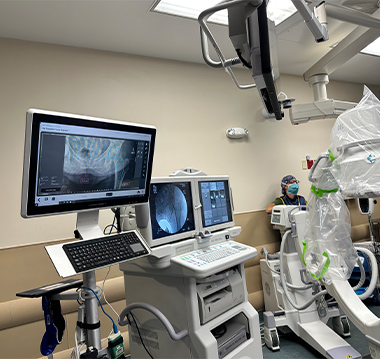What is Hip Replacement Surgery?
Total hip arthroplasty, also known as hip replacement surgery, replaces hip joints which have become damaged or worn out. A prosthesis (artificial joint) will be used as a replacement. These are either made of plastic, metal or ceramic depending on your individual requirements and medical history. Hip replacement surgery is commonly undertaken to address severe arthritis pain and damaged associated with this condition; or following a hip fracture, the likes of which can be sustained as a result of sporting activities. Forms of arthritis which may affect the hip joint include rheumatoid arthritis, which involves the inflammation of the joint’s synovial lining; traumatic arthritis, which is the result of an injury; and osteoarthritis, the degenerative joint disease.

When Surgery Is Recommended?
There are several reasons why your doctor may recommend hip replacement surgery. People who benefit from hip replacement surgery often have:
The most common cause of chronic hip pain and disability is arthritis. Osteoarthritis, rheumatoid arthritis, and traumatic arthritis are the most common forms of this disease.
Osteoarthritis This is an age-related wear and tear type of arthritis. It usually occurs in people 50 years of age and older and often in individuals with a family history of arthritis. The cartilage cushioning the bones of the hip wears away. The bones then rub against each other, causing hip pain and stiffness. Osteoarthritis may also be caused or accelerated by subtle irregularities in how the hip developed in childhood.
Rheumatoid Arthritis This is an autoimmune disease in which the synovial membrane becomes inflamed and thickened. This chronic inflammation can damage the cartilage, leading to pain and stiffness. Rheumatoid arthritis is the most common type of a group of disorders termed inflammatory arthritis.
Posttraumatic Arthritis This can follow a serious hip injury or fracture. The cartilage may become damaged and lead to hip pain and stiffness over time.
Osteonecrosis An injury to the hip, such as a dislocation or fracture, may limit the blood supply to the femoral head. This is called osteonecrosis (also sometimes referred to as avascular necrosis). The lack of blood may cause the surface of the bone to collapse, and arthritis will result. Some diseases can also cause osteonecrosis.
Childhood hip disease Some infants and children have hip problems. Even though the problems are successfully treated during childhood, they may still cause arthritis later in life. This happens because the hip may not grow normally, and the joint surfaces are affected.
Longer life of implants
Preferred choice for its durability
Reduction in Joint wear
Patients able to stand the next day
No need for Physiotherapy
Quick Recovery
● Done in old age.
Hybrid THR : Where either the stem on the cup fixation is without cement the one side ic cemented & other is uncemented.
Uncemented THR : Where both components are uncemented.
● Generally considered best for young patients.


